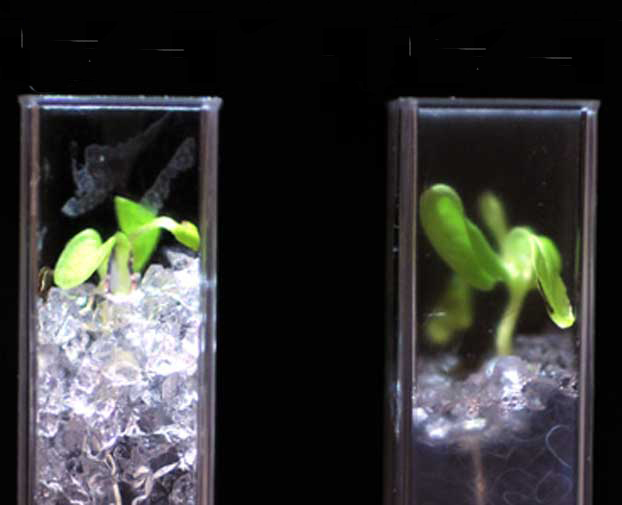

There’s a whole world of things to learn and discover about this world, some of the unanswered questions lie right below our feet so, scientists have decided to look into and see what they can find, with clear soil!
Discovery Science writes:
The clear soil was developed by theoretical biologist Lionel Dupuy at the James Hutton Institute in Dundee, Scotland. It’s is made of a synthetic material known as Nafion. The compound can be modified to mimic the chemistry of natural soils. It’s not transparent at first, but when watered in a customized liquid solution, the particles bend light, making the solution clear.
Dupuy and his colleagues used the soil to analyze how E. coli bacteria, certain strains of which can be harmful to humans, interacts with lettuce roots. By using a genetically modified version of E. coli that carried a green fluorescent protein from jellyfish, the scientists could see through the clear soil how the bacterium formed micro-colonies in the root zone.
“If we understand better the contamination route, then we can develop strategies to limit the transfer of E. coli to the food chain,” Dupuy told Inside Science. “We don’t really understand how E. coli enters the food chain, particularly for fresh produce.”
Read more at news.discovery.com/tech



